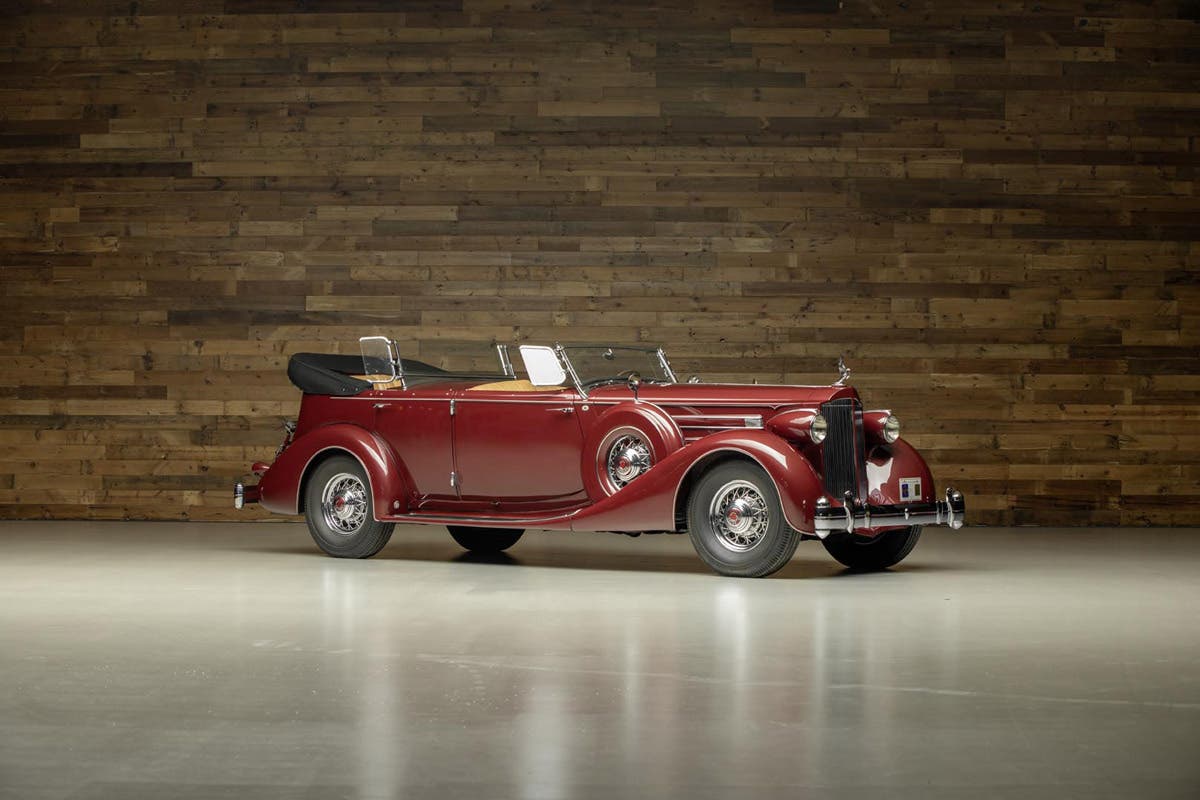New style for Nash
Redesigned styles were introduced for Nash’s 1952 anniversary year.
The 1952 Greenbrier two-door station wagon featured two-tone paint
and richer trim than its 1951 counterpart. It was priced at $2,119.
What a year — 1952. Puerto Rico became a commonwealth of the United States and Dwight D. Eisenhower was elected president of the United States. Within weeks of the election, Ike was in Korea, trying to find out how to stop the fighting. It was a year that brought us the first televised atomic bomb explosion and the first sex-change operation. Curly Howard, of Three Stooges fame, passed away.
In Kenosha, Wis., the Nash Motors Division of Nash-Kelvinator Corp. marked the 50th birthday of its automotive “family.” The original Thomas B. Jeffery Company had offered its first automobile to the public in 1902. For 1952, Nashes were redesigned, a fancy Rambler wagon was created and a still-fresh and restyled Nash-Healey sports car saw limited production.
Nash used its golden anniversary to introduce a totally redesigned line of big cars called Nash Golden Airflytes. “Take Command . . . It’s Your Golden Airflyte,” read the headline in one advertisement that urged car buyers: “If you dare to let your dreams come true — drive the Golden Airflyte. Here is America’s first car styled by Pinin Farina, world’s foremost custom car designer. Here are comfort and luxury features so advanced that other new cars seem outdated in comparison! Here’s the supreme thrill of new Super Jetfire performance – with new horizontal Direct Draft carburetion! (Plus, of course, traditional Nash economy). Here is the widest, most comfortable seating to be found in any car . . . the best eye-level vision, front and rear . . . the deepest windshield (and new Road-Guide fenders to rest your driving eyes.”
These cars were actually partly styled by Italian designer Pinin Farina and had more conventional lines than the 1949 to 1951 models. The Statesman and the Ambassador again shared sheet metal from the cowl back. The 1952 Statesman had its wheelbase increased to 114-1/4 inches and the engine was stroked one-quarter inch to 195.6 cid. This increase in displacement boosted the Statesman engine’s output to 88 hp at 3,800 rpm.
Model offerings were cut back a little for 1952 and the Deluxe Business Coupe was deleted entirely. Two- and four-door sedans were offered in the Super series and these two styles plus the Country Club hardtop came with Custom trim. Prices for the five Nash cars ranged from $2,144 to $2,433. All models weighed between 3,000 and 3,100 pounds. Total series production was a strong 50,500 cars, but only 869 Country Club Hardtops were built.
The 1952 Nash Ambassador shared the same styling and design changes as the 1952 Nash Statesman, the major difference being the seven-inch longer front end. The 1952 Nash Ambassador came in two series: Super and Custom.
Supers had basic features and Customs added foam seat cushions, two-tone upholstery, an electric clock, directional signals, chrome wheel discs and front and rear courtesy lights. For 1952, the Ambassador engine was bored one-eighth of an inch, yielding 252.6 cid. The same five models in this series sold at prices from $2,521 to $2,829. Series production was 40,700 units.
The 1952 Nash Rambler line received no major changes from 1951. Custom models came with the Nash “Weather-Eye” conditioned air system and a radio as standard equipment. The Greenbrier station wagon was an upgraded model with two-tone paint and richer trim. Prices started at $1,842 for the Utility Wagon and ran to $2,119 for both the Convertible Landau and the Greenbrier Station Wagon. In all, 53,000 Ramblers were made.
The restyled-for-1952 Nash-Healey sports car had a special two-passenger open body made of aluminum, an adjustable steering wheel and leather upholstery. The 1952 Nash-Healey sold for $4,063 and used a 234.8-cid, 125-hp Nash six with 8.0:1 compression. It is sometimes called the “951” model. The second version, priced at $5,909, switched to a 252.6-cid, 140-hp Le Mans engine with dual carburetion.
The English-built sports car’s styling included a grille of outward-curved vertical chrome bars entirely circled by a heavy chrome molding. There were model designations on the front fender and in back of the wheel opening. The full hood had a unique hatch cover (air scoop) with a vertical grille opening.
These cars were built at Warwick, England, and sold by Nash dealers. Styling by Pinin Farina was seen on 1952 models and late in the year, the more powerful Le Mans engine was released. According to “Ward's Automotive Yearbook 1953,” the official introduction date of the Nash-Healey, in the United States, was Feb. 16, 1951. A total of 254 Nash-Healeys were made this year, of which 150 had the Le Mans six.
The 1952 Nash Ambassador and Statesman models were introduced March 14, 1952. The updated Rambler appeared on Apr. 1, 1952. Production hit a peak of 152,141 units or 3.51 percent of American auto sales. Model-year production included 99,086 Statesman/Ambassador models and 55,055 Ramblers. Over 20 percent of all Nash products, or 28,950 cars, had Hydra-Matic Drive this year. The optional Warner Gear overdrive was installed in 74,535 units.
The new Nash-Healey took first place in its class in the French Grand Prix, at Le Mans, plus third-place overall. These racing models used the Le Mans “Dual-Jetfire” Ambassador engine, later released as a production car powerplant.








